
Underground display at Secret Cellar “B,” 122/351 Ngô Gia Tự
With so many other destinations to visit, Hồ Chí Minh City is often regarded as little more than a convenient starting or finishing point for a tour of Việt Nam. However, there is a wealth of untapped touristic resources that could help turn this city into a great deal more than a brief stopover. Prominent amongst them are the little-known registered historic buildings that form the city’s underground tunnel and cellar network.
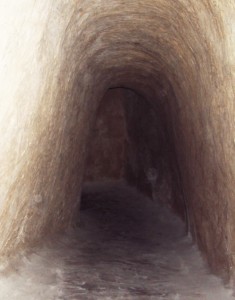
Underground at the Phú Thọ Hoà Tunnels
Secret passageways and compartments may be found throughout the world, but it’s hard to think of anywhere else where underground tunnels and cellars have been put to such extensive or indeed effective wartime use as Hồ Chí Minh City. Which makes it all the more surprising that, in this age of mass tourism, such a prime touristic resource remains unexploited.
The story of Vietnamese reliance on underground hideouts during the struggle for independence may be traced back to the period immediately after World War II, when the French returned to Sài Gòn, driving Việt Minh forces into the hinterland. In the years that followed, the revolutionary command in the south came up with an ingenious solution to the problem of concealing their activities from French eyes – hiding men and weapons underground.
The prototype for many subsequent revolutionary tunnel complexes was the Phú Thọ Hoà Tunnels in Sài Gòn’s northwest suburb of Tân Phú, where, early in 1947, Việt Nam’s first network of interconnected underground caverns was dug beneath cassava fields to serve as a guerilla base and storage facility.
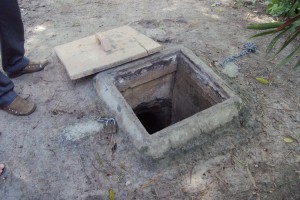
A tunnel entrance at Phú Thọ Hoà
Packed with weapons, food and medical supplies, they played a crucial role in the First Indochina War. However, their close proximity to the French high command in Sài Gòn proved something of a mixed blessing and revolutionary activity soon switched to the more remote Củ Chi underground base, construction of which had got underway soon after the completion of the Phú Thọ Hoà complex.
The development of the Củ Chi Tunnels after 1962 and of residential tunnel networks at Vịnh Mốc, Vĩnh Linh, Mụ Giai and Kỳ Anh in the heavily-bombed “DMZ” after 1965 is of course the stuff of legend. Yet few people realise that Hồ Chí Minh City is also home to an extraordinary network of secret cellars, which were dug under residential buildings from the late 1940s onwards to serve as covert printing houses, weapons stores or safe houses.
Covert publishing
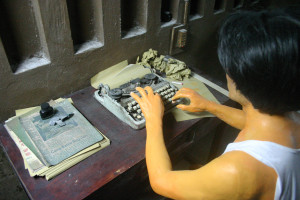
Underground display at Secret Cellar “B,” 122/351 Ngô Gia Tự
Propaganda was crucial to the success of the revolution, and both the Việt Minh and later the National Liberation Front (NLF) went to great lengths to keep the population informed about events in the north.
Built to replace an earlier and less secure cellar under a house near Bà Chiểu Market, Secret Cellar “B” (122/351 Ngô Gia Tự, Q 10) was dug under cover of darkness between February and May 1952 by a team of operatives led by Hà Minh Lân, who set up a shrine-making business as daytime cover for the operation. Highly sophisticated in both design and construction, the cellar housed a covert printing press that functioned for over five years, publishing in leaflet form the latest news transcribed from northern radio broadcasts.
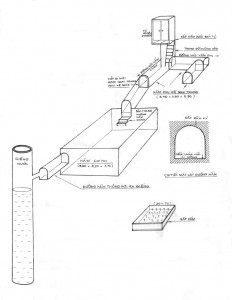
The ingenious layout of Secret Cellar “B”
The cellar was abandoned in December 1957 for security reasons and decommissioned in 1959 by stuffing it with soil-filled containers that preserved the structure intact until after Reunification.
As the insurgency gathered pace in the early 1960s, several other covert printing presses were set up in the city. One of these, the Secret Printing Cellar of the Chinese-language Propaganda and Training Committee in Chợ Lớn, was originally established at 81 Gò Công. However, after several years of operation that address was deemed insecure, so in mid-1965 it was relocated to a quiet back-alley house at 341/10 Gia Phú in District 6. An 11-member NLF team, once more posing as a family, dug two cellars below the house and installed printing machinery. Metal stamping machinery was also acquired to manufacture school bag locks above ground as cover and drown out the clatter of the printing press below their feet. The underground printing press on Gia Phú operated without discovery until 1970, when it moved to another location.
Weapons storage
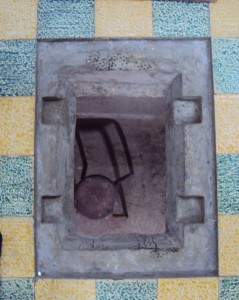
The weapons storage cellar at 183/4 3 Tháng 2
The NLF also dug numerous secret cellars to store weapons and explosives brought from rural bases such as Củ Chi, particularly in the run-up to the 1968 Tết Offensive. One of the earliest examples was dug in 1965 by shoemaker and seasoned revolutionary Đỗ Văn Căn under his house at 183/4 3 Tháng 2. Over the four-month period from July to October 1965, Căn secretly collected 50kg of explosive and detonators, 50 grenades, seven AK47 sub machine guns, several pistols, 21,000 bullets and a number of other items of weaponry from a warehouse in An Đông, transporting them back to his house concealed in bales of rubber.
They were stored in his secret cellar until January 1968, when plans were made to use them in an attack on the city Police Headquarters. However, the operation was aborted and the weapons and explosives remained undiscovered in the cellar. In April 1975, as PLA forces approached Sài Gòn, they were unpacked and prepared for an attack on the nearby nearby ARVN barracks, “Camp Lê Văn Duyệt.” However, the Sài Gòn government surrendered before the attack could take place.
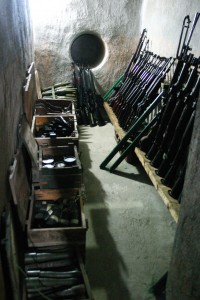
The weapons storage cellar at 287/70 Nguyễn Đình Chiểu
Unlike the munitions in the cellar on 3 Tháng 2, those stashed beneath the house at 287/70 Nguyễn Đình Chiểu did see combat. Early in 1967 the house’s owner, NLF operative Trần Văn Lai, dug two cellars underneath the house and from June 1967 onwards, pistols, rifles, grenades and over 350kg of TNT were transported there in hollowed-out boxes and specially-adapted wickerwork baskets and plant pots.
On the evening of 30 January 1968, the 19-strong Special Forces Team 5 collected them and launched an attack on the heavily-defended south gate of the Independence Palace. The attack failed and all of the team members lost their lives, but despite a subsequent search of the address, the secret cellar was never discovered.
Concealment
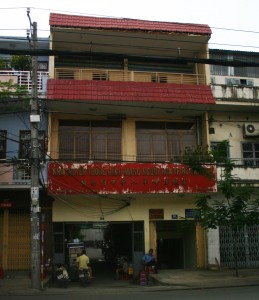
91 Phạm Văn Chí in District 6
Some of the secret cellars established in Sài Gòn and Chợ Lớn during the 1960s were intended not as printing houses or munitions stores, but rather for concealing revolutionary activists.
In 1963 a Chợ Lớn businessman known as Lưu Vinh Phong purchased a house at 91 Phạm Văn Chí, right opposite the District 6 Police Station and Courthouse. He then proceeded to dig a secret cellar under the floor and also created a secret compartment behind a false wall at mezzanine level to hide revolutionary cadres.
From late 1967, many members of the National Chinese Language Committee of the South were successfully hidden in these two spaces, facilitating preparations for the Tết Offensive of 1968. As with other covert bases in the city, a craft workshop was set up here to provide cover.
Phong Phú Communal House in District 9 won its revolutionary spurs during the struggle against the French – its remote location made it an ideal spot to train revolutionary youth militia groups and assemble supplies, food and weapons for the armed struggle against colonialism.
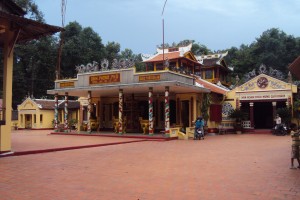
Phong Phú Communal House in District 9
The Communal House was destroyed by the Việt Minh during a scorched earth campaign in 1948, but it was rebuilt in 1952 and later played a key role, becoming the headquarters of revolutionary forces in the Thủ Đức area. In 1960 the entire Communal House Association was arrested on suspicion of ties with the revolution. However, they would not be shaken from their efforts and continued to channel money and supplies to revolutionary forces for the duration of the war. After suffering further damage in 1969, the Communal House had to be rebuilt yet again, this time with a secret cellar underneath a bathroom to hide revolutionary cadres during raids.
Hot-footing it from the palace
Yet it wasn’t just revolutionaries who dug secret cellars. When South Vietnamese President Ngô Đình Diệm ordered the construction of a new Independence Palace in February 1962 after the bombing of the original Norodom Palace, the plans by architect Ngô Viết Thụ included a network of underground tunnels, reinforced to withstand the impact of 500kg bombs.
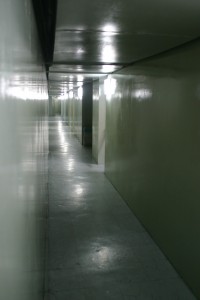
The underground tunnels built for South Vietnamese President Ngô Đình Diệm at the Independence Palace
At the start of the four-year construction period, Diệm took up temporary residence in the Gia Long Palace – the former French Lieutenant Governor’s Palace, now the Hồ Chí Minh City Museum at 65 Lý Tự Trọng in District 1 – and immediately ordered the construction of a second network of tunnels under that building, so that he could take shelter and if necessary escape in the event of a further coup attempt.
The fact that the tunnels under the Gia Long Palace were also designed by architect Ngô Viết Thụ accounts for the persistent rumour that a connecting tunnel was built between the two palaces. Both sets of tunnels may now be visited by tourists, but with sections of each still cordoned off, that rumour remains alive and well!
Recently-unearthed US photographs and documents (see Saigon’s mystery tunnels) suggest that Diệm also commissioned the construction of at least two other tunnels, leading from the Gia Long Palace all the way to the Mạc Đĩnh Chi Cemetery [now Lê Văn Tám Park] and the Saigon Zoo.
Ironically, when the final coup did take place in November 1963, Diệm only made use of the tunnels under the Gia Long Palace to escape out the back door onto Lê Thánh Tôn street and flee by car to Chợ Lớn, where he and his brother Nhu were assassinated the following day.
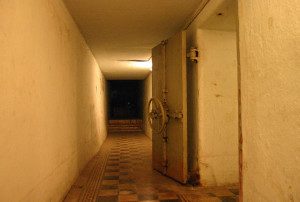
The tunnels built for South Vietnamese President Ngô Đình Diệm under the Gia Long Palace, now the Hồ Chí Minh City Museum
Collectively, the secret tunnels and cellars of Sài Gòn represent a unique type of “revolutionary architecture” which played a crucial role in the fight for independence. Those examples which have survived stand as a tribute to their creators and to the unsung heroes who lived and worked in them.
And for Hồ Chí Minh City’s tourism companies, they provide an opportunity to breathe new life into the city’s tourism industry.
Getting there
Phú Thọ Hòa Tunnels (Khu Di tích Địa đạo Phú Thọ Hòa) at 139 Phú Thọ Hoà, Q Tân Phú are open daily from 7.30am-11.30am and 2pm-5pm.
Secret Cellar “B” – Printing Office of the Patriotic Support Association (Hầm bí mật “B” – Cơ sở In ấn của Hội Ủng hộ Vệ Quốc đoàn) at 122/351 Ngô Gia Tự, Q 10 and the Secret Weapons Hiding Place (Hầm bí mật chứa vũ khí) at 183/4 Ba Tháng Hai, Q 10 may be viewed by special arrangement with the District 10 Office of Culture, Sports and Tourism, 474 Đường 3 Tháng 2, Phường 14, Quận 10, TP.HCM
Secret Printing Cellar of the Chinese-language Propaganda and Training Committee (Hầm bí mật in tài liệu của Ban Tuyên huấn Hoa vận) at 341/10 Gia Phú, Q 6 and Sài Gòn-Gia Định Special Region Committee Secret Headquarters (Cơ sở bí mật của Thành ủy Sài Gòn-Gia Định) at 91 Phạm Văn Chí, Q 6 may be viewed by special arrangement with the District 6 Office of Culture, Sports and Tourism, UBND Quận 6, 107 Cao Văn Lầu, Phường 1, Quận 6, TP.HCM
Secret Weapons Hiding Place Museum (Bảo tàng Hầm bí mật chứa vũ khí) at 287/70 Nguyễn Đình Chiểu, Q 3 opens Mon-Fri on request from 7.30am-11.30am and 2pm-5pm.
Phong Phú Communal House (Đình Phong Phú) at Khu phố 3, Phường Tăng Nhơn Phú B, Q 9 is open daily from 7am-6pm.
Unification Palace (the former Independence Palace, Dinh Thống nhất) at 135 Nam Kỳ Khởi Nghĩa, Q 1 opens daily at 7.30am-11am, 1pm-4pm, admission Đ30,000 adults, Đ3,000 children.
Hồ Chí Minh City Museum (Bảo tàng Thành Phố Hồ Chí Minh) at 65 Lý Tự Trọng, Q 1, opens daily from 8am-4pm, admission Đ15,000.
Tim Doling is the author of the guidebook Exploring Saigon-Chợ Lớn – Vanishing heritage of Hồ Chí Minh City (Nhà Xuất Bản Thế Giới, Hà Nội, 2019)
A full index of all Tim’s blog articles since November 2013 is now available here.
Join the Facebook group pages Saigon-Chợ Lớn Then & Now to see historic photographs juxtaposed with new ones taken in the same locations, and Đài Quan sát Di sản Sài Gòn – Saigon Heritage Observatory for up-to-date information on conservation issues in Saigon and Chợ Lớn.

